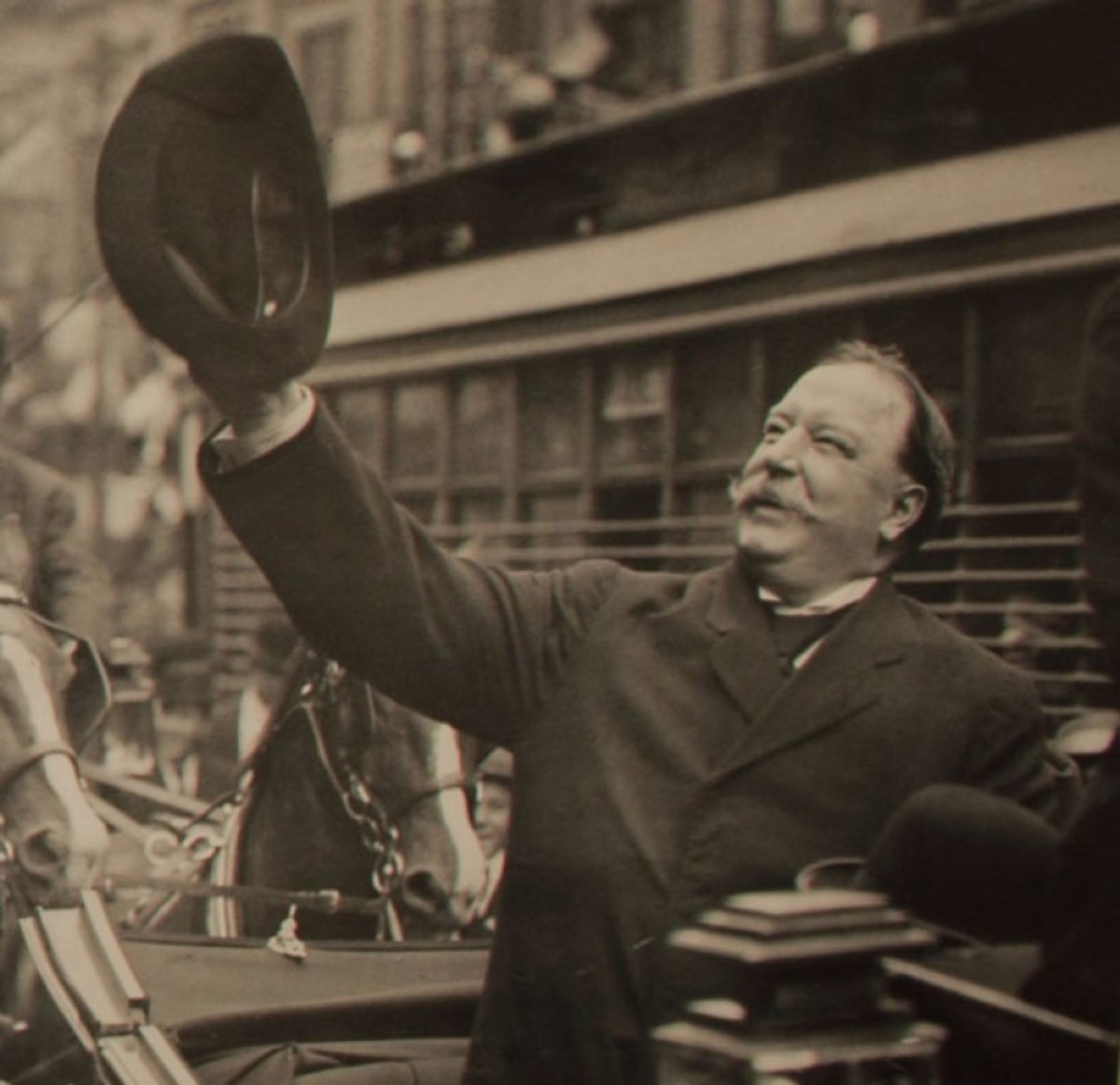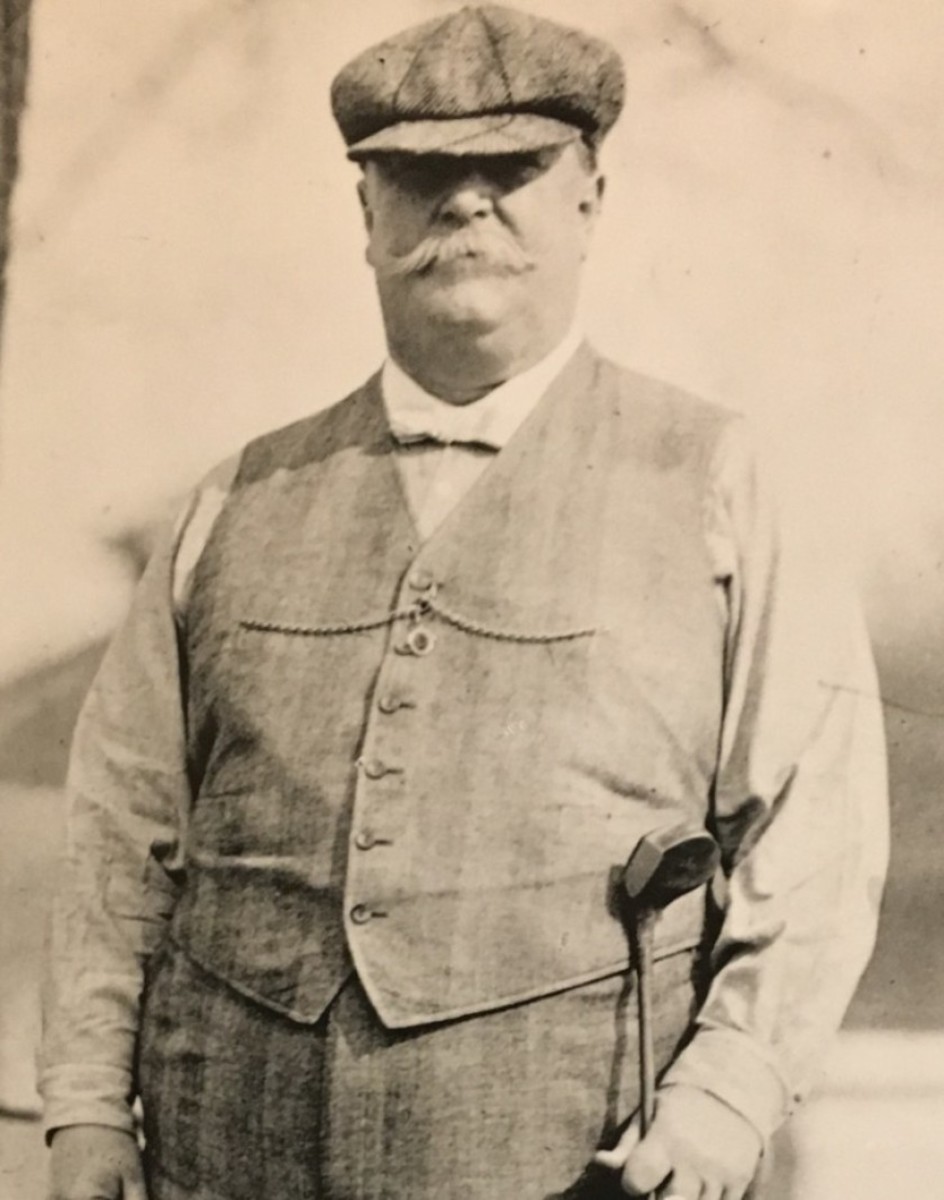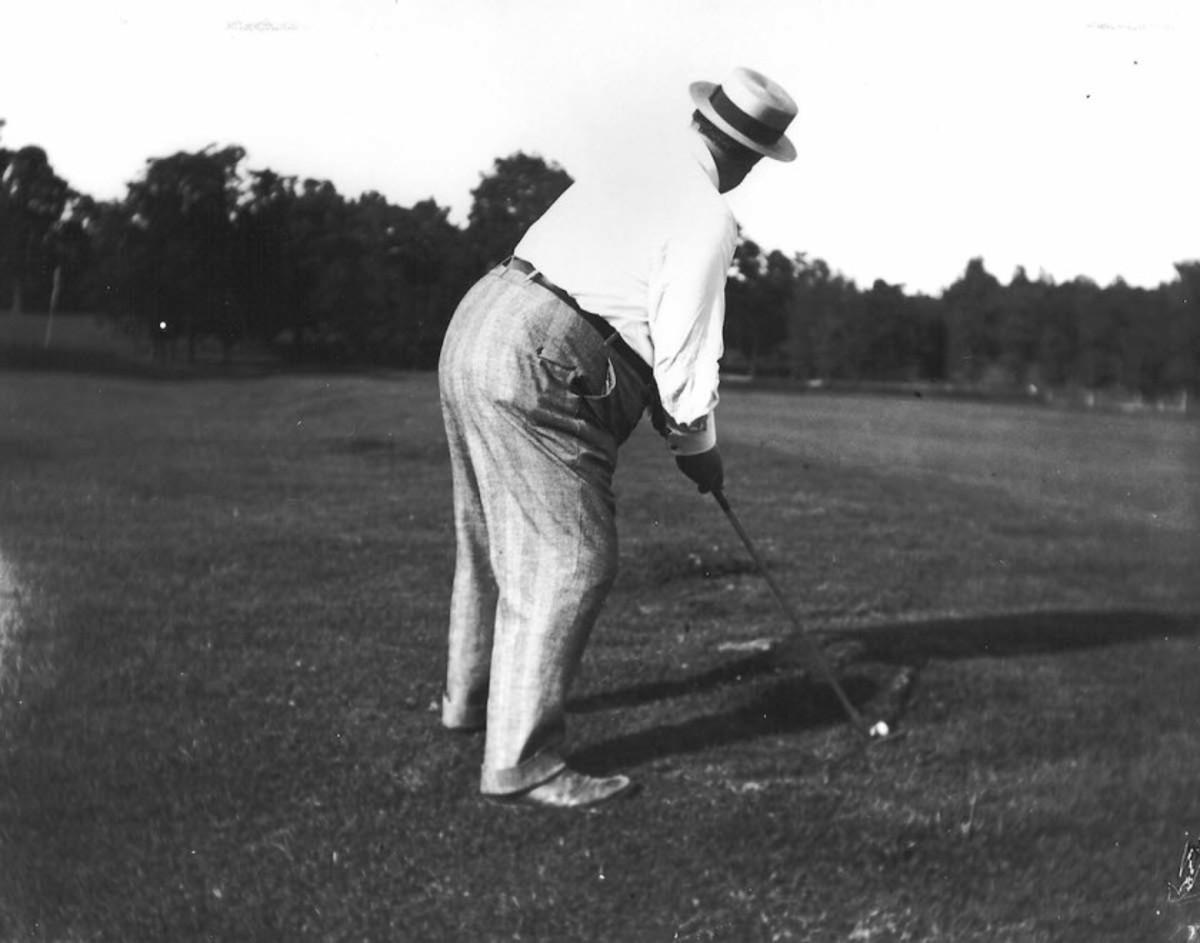In golf, President Taft finds a national treasure

William Howard Taft wasn’t the best golfer to occupy the Oval Office, but he certainly stood out as being among the most avid.
Taft, the 27th U.S. president, preceded the advent of the Presidents Cup, a biennial golf match between the U.S. and Internationals that will play its 13th edition this week in Melbourne, Australia. But Taft, who died in 1930 after serving as president from 1909 to 1913 and then 1921-30 as the Supreme Court’s chief justice, no doubt would have enjoyed the festivities.

The Presidents Cup, which debuted in 1994, customarily recognizes a former or current head of state as an honorary chair. When the event is hosted by the U.S., the presidents typically accepts the honor. Gerald Ford, George H.W. Bush, Bill Clinton, George W. Bush, Barack Obama (twice) and Donald Trump, all avid golfers, have accepted the honor. Trump is not expected to appear in Melbourne this week. Scott Morrison, Australia’s prime minister, will serve as this year’s chair.
U.S. presidents from William McKinley to Trump have been golfers of one level or another, except for Herbert Hoover, Harry Truman and Jimmy Carter. But Taft was the first commander-in-chief to play a lot of golf and take the game seriously. He was introduced to golf at age 36 in 1894 by his brother Henry at Murray Bay in Quebec, where the Taft family kept a summer home.
The course at Murray Bay was nine holes and wasn’t much more than a field, but Taft couldn’t get enough of the game, playing daily. By his own admission, he became addicted to golf.
The next year, while a federal judge on the Sixth Circuit Court of Appeals, Taft was a co-founder and first president of the Cincinnati Golf Club. In 1901, Taft resigned his position as a federal judge to accept an appointment by President McKinley as governor-general of the Philippines, which had become a U.S. territory after the Spanish-American War. Fortunately, Taft could take his golf clubs with him; British workers at the Manila Railway Co. had built a golf course in 1886, and the Manila Golf Club opened in 1901, the year Taft arrived.
In 1904, Taft left the Philippines to become President Theodore Roosevelt’s secretary of war. Taft continued his golf at Chevy Chase Club in Bethesda, Md. No one much cared about Taft’s obsession for golf or the hours he spent on the course. Roosevelt loomed as the center of attention. He was an outdoorsman, a hunter, a man on horseback, and the leader of the famous charge at San Juan Hill in Cuba during the Spanish-American War, a man who dominated conversation and the news.

Roosevelt and Taft were close friends. Both were Republicans and political progressives, and Roosevelt thought Taft was the man to carry his policies forward and picked him to be his successor in the 1908 presidential election. Suddenly, Taft was in the spotlight, and Roosevelt wrote to Taft about his golf, saying, “It would seem incredible that anyone would care one way or the other about your playing golf, but I have received literally hundreds of letters from the West protesting about it. I myself play tennis, but that game is more familiar; besides, you never saw a photograph of me playing tennis. I’m careful about that; photographs on horseback, yes; tennis, no. And golf is fatal.”
Taft ignored his mentor’s advice, campaigned very little in person and spent most of his time playing golf at Hot Springs, Va., or at the Bon Air Hotel in Augusta, Ga. He still won the election handily against William Jennings Bryan.
Taft was fairly tall at 5 feet, 10 inches, but he weighed more than 300 pounds and ballooned to 350-plus during his presidency. He certainly didn’t look like an athlete. However, he had been the heavyweight wrestling champion at Yale, played baseball in his youth and, in 1910, started the presidential tradition of throwing out the ceremonial “first pitch” on opening day when he zipped the ball from his front-row seat at the Washington Senators’ Griffith Stadium to pitcher Walter Johnson on the mound.

Taft was consumed by golf and, in the days before golf carts, had to walk, getting around 18 holes in 2½ hours. With his girth, a big handlebar mustache, and outfitted with a large Panama hat on the golf course, Taft presented a cartoonist’s dream.
In 1908, Taft wrote to the St. Andrew’s Golf Club in New York on the occasion of the 20th anniversary of its founding, “Preceding the late election campaign there were many of my sympathizers and supporters who depreciated its becoming known that I was addicted to golf, as evidence of aristocratic tendencies and a desire to play a rich man’s game. You know and I know that there is nothing that furnishes a greater test of character and self-restraint, nothing which puts one on an equality with one’s fellows or, I may say, puts one lower than one’s fellows than the game of golf.”
After inauguration in March 1909, Taft maintained a predictable schedule. He arose at 7 a.m. and did a series of physical exercises, followed by breakfast at 8, usually a 12-ounce steak with plenty of buttered toast and coffee. Then he spent 10-15 minutes meeting various members of the public, and by 9 he was in his office to attend to presidential duties. At 1:30 p.m., Taft ate an apple and kept the afternoons free except on Tuesday and Fridays, when he presided over Cabinet meetings. The free afternoons were spent on the golf course at Chevy Chase, regardless of weather. Taft was known to play in rain. After golf, he ate a large dinner and attended to more office work before retiring.
Teddy Roosevelt had a “tennis cabinet,” members of the government or friends with whom he played on courts behind the White House. Taft formed his own “golf cabinet,” which had a core of regulars: Vice President James Sherman, military aide Army Capt. Archibald Butt, Army Brig. Gen. Clarence Brown and Sen. Jonathan Bourne of Oregon. Taft played golf for enjoyment and relaxation, and he did not discuss business or affairs of state on the course. Golf provided a refuge from problems. As Taft noted, “The beauty of golf to me is that you cannot play if you permit yourself to think of anything else.”
Presidential golf during Taft’s term in office was said to be a waste of time by his political opponents, who maintained that the president should tend to the country’s work. His supporters argued that golf was a necessary bit of relaxation needed due to the pressures of the presidency. These same sentiments continue to this day; the sides just change depending on who’s in office.
During the summers, Taft rented a house in Beverly, Mass., believing it would be inappropriate for the president to go outside the United States to the Taft family summer home in Quebec. His “Summer White House” was near Myopia Hunt Club and Essex County Club, which provided ample opportunity for golf. Taft liked the relaxed attitudes outside Washington, and he also could play golf in the morning.
Taft played a decent game of golf for the times, returning scores in the high 90s or low 100s. He had a short, quick backswing, with the club not reaching horizontal at the top, and his follow-through was low and sort of around him, probably due to his expansive waistline and his days as a baseball player. He used a baseball grip.
Taft had the perfect temperament for the game. Walter Travis, a three-time U.S. Amateur champion and the first American to win the British Amateur, said, “When things go wrong, it is his fault and not the fault of the course, the caddie, the club, or his opponent.” Everybody’s Magazine reported, “The President’s golfing vocabulary contains nothing to which any Unitarian would take exception. Nay, more — it would not offend the Scotchest of Presbyterians.”
During a round at Kebo Valley Golf Club in Bar Harbor, Maine, Taft took a 27 on what is now the 17th hole, dubbed the “Taft Hole.” Apparently, 17 of those strokes were in an attempt to play out of a bunker.
Taft was a player who followed the rules closely, kept track of every stroke and, though he refused to accept a conceded putt, he freely gave putts to others. On one occasion while playing golf with Travis, Taft missed two short putts in a row, and Travis noted that the worst that Taft could say was, “Oh, pshaw!”
Travis noted, “[Taft] plays with clubs that are fairly long and heavy, the irons especially so. His driver and brassy are about 47 inches and weigh about 14 ounces.” Normal driver-shaft length would have been 43.5 inches, but the extra length helped Taft to swing around his large waistline. Taft also carried two mashies, a midiron, a niblick and a center-shafted Schenectady putter with an aluminum head, for a total of seven clubs.
Taft described his game disparagingly as “bumble puppy” golf, but Travis disagreed, saying, “Scores of golfers would sell their immortal souls to put up such a game.” Taft was a good driver and approached the green well. Putting was his bête noire.
One of the jokes of the day was, “If [Taft] put a golf ball where he could hit it, he couldn’t see it. And if he put a golf ball where he could see it, he couldn’t hit it.” Taft heard these jokes and saw the cartoons and responded with his loud and infectious laugh. None of the humor directed at Taft made him angry, and his joining in the laughter reduced much of the damage that might have otherwise resulted.
Occasionally, Taft encouraged photographers to take pictures of him on the golf course. The game was growing in America, and Taft wanted to promote it and also public golf courses to open the game to the masses. He encouraged the use of public parks for golf courses. “Golf is splendid recreation, which can be enjoyed with profit by the young and old,” Taft said. “It is in the interest of good health and good manners. It promotes self-restraint, and, as one of its devotees has well said, affords the chance to play the man and act the gentleman. It is a game of all classes, not a mere plaything for faddists, nor, as many suppose, a game for rich men only.”
Unfortunately for Taft, his predecessor and mentor, Roosevelt, was displeased with Taft’s policies, believing he wasn’t pursuing progressive goals quickly enough. Roosevelt sought the presidential nomination at the 1912 Republican Convention. Taft won the nomination, and Roosevelt ran as a third-party candidate, splitting the Republican vote, as Woodrow Wilson won the presidency. Taft carried only two states, Utah and Vermont.
The day after losing re-election, an unchastened Taft headed to Chevy Chase to play golf. When he left the White House, he packed up the 100-plus golf clubs that he had accumulated.
Taft served as honorary chairman for the 1913 U.S. Open at Brookline, where a young American, Francis Ouimet, would electrify the sporting world by defeating established British golfers Harry Vardon and Ted Ray for the title.
There were no presidential pensions at the time, so Taft took a position as a law professor at Yale, which allowed time for golf. In 1921, President Warren Harding appointed Taft as chief justice of the Supreme Court, where he served until his death at age 72, the only person to have served as president and chief justice. Being on the highest court didn’t keep Taft off the golf course, but a heart condition required him to exit the game at age 70.
Taft probably would be delighted with the Presidents Cup. He loved match play, though he always finished a round if the match ended before the 18th hole, playing the bye holes so he could record his score. While serving as governor-general of the Philippines, Taft tried to promote golf in Southeast Asia, and he would have been pleased to see an International team featuring three Australians, two South Koreans, and one player each from Japan, China and Taiwan.
In his day, it would have been quite a trip to get to Australia: three weeks by boat from Hawaii and another week or so to get to Hawaii. And no golf on the boat.
